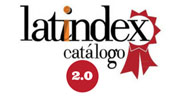Monitoring System of Environmental Variables Using a Wireless Sensor Network and Platforms of Internet of Things
DOI:
https://doi.org/10.29019/enfoqueute.v8n1.139Keywords:
Environment, IoT, weather stations, Wi-Fi, WSN.Abstract
This work proposes a system for collecting meteorological data using a Wireless Sensor Network (WSN), that is able to transmit data in real-time. The system automatizes the process of collecting the data in a continuous manner for long periods of time, for this, the module is equipped with a source of solar energy that allows autonomous operation. In order to obtain viability of design and prototype implementation, the construction of two systems was proposed based on DigiMesh and Wi-Fi; those prototypes could be applied to different scenarios such as urban and rural areas. Additionally, it was performed an evaluation of broadcasting of information to platforms of Internet of Things (IoT), where the data collected by the nodes will be managed and displayed. This system was conceived as a low-cost alternative compared with conventional weather stations that offer these facilities and are based on free hardware and software components. Finally, the validation of the obtained results was performed using a statistical analysis with the collected data of the weather station Davis Vantage Pro, obtaining a maximum average relative error of 4.93%.
Downloads
References
Aguilera, J. & Hontario, L. (2011). Dimensionado de sistemas fotovoltaicos autónomos [en línea]. Departamento de Electrónica, Escuela Politécnica Superior, Universidad de Jaén. Jaén (España): Grupo IDEA <https://manuelberaun.files.wordpress.com/2011/12/dimensionado-de-sfv-autonomos.pdf> [consulta: 1/4/16].
Bolivar, l. & Alexandre da Silva, G. (2015). Solar radiation monitoring using electronic embedded system Raspberry Pi database connection MySQL, Ubidots and TCS-230 sensor. 2015 CHILEAN Conference On Electrical, Electronics Engineering, Information And Communication Technologies (CHILECON). http://dx.doi.org/10.1109/chilecon.2015.7400420
Faludi, R. (2011). Building wireless sensor networks (1st ed.). Beijing: O'Reilly. 392 p. ISBN: 978-0-596-80773-3.
Kuppusamy, P. (2016). Smart Home Automation using Sensors and Internet of Things. Asian Journal Of Research In Social Sciences And Humanities, 6(8), 2642. http://dx.doi.org/10.5958/2249-7315.2016.00771.1
Lin, C., Zadorozhny, V., Krishnamurthy, P., Park, H., & Lee, C. (2011). A Distributed and Scalable Time Slot Allocation Protocol for Wireless Sensor Networks. IEEE Transactions On Mobile Computing, 10(4), 505-518. http://dx.doi.org/10.1109/tmc.2010.163
MATHWORKS (2016). Understand Your Things, the open IoT platform with MATLAB analytics. [en línea]. ThingSpeak: < https://thingspeak.com/ > [consulta: 7/4/16].
NATURALEZAYCULTURA (2016). Reserva de Biosfera Podocarpus - El Cóndor [en línea]. Loja (Loja, Ecuador): Naturaleza y Cultura Internacional <http://www.naturalezaycultura.org/spanish/htm/ecuador/areas-andes-podocarpus.htm> [consulta: 2/11/16].
OMM (2014). Guía de instrumentos y métodos de observación meteorológicos [en línea]. Ginebra (Suiza): OMM <http://l ibrary.wmo.int/pmb_ged/wmo_8-2014_es.pdf> [consulta: 10/09/16].
Perera, C., Liu, C., & Jayawardena, S. (2015). The Emerging Internet of Things Marketplace From an Industrial Perspective: A Survey. IEEE Transactions On Emerging Topics In Computing, 3(4), 585-598. http://dx.doi.org/10.1109/tetc.2015.2390034
PHANT (2015). Documentation, phant.io. Colorado (Boulder, CO, United States): SparkFun Electronics <http://phant.io/docs/> [consulta: 5/4/16].
Prat, l. (2015). Dimensionado de Sistemas Fotovoltaicos [en línea]. Universitat Politécnica de Catalunya. Barcelona (España): Departamento de Ingeniería Electrónica <http://datateca.unad.edu.co/contenidos/358054/dimensionado_sistema_fotovoltaico.pdf> [consulta: 3/4/16].
OGC (2009). Sensor Web Enablement (SWE) [en línea]. Massachusetts (Wayland, USA) http://www.opengeospatial.org/ogc/markets-technologies/swe [consulta: 2/12/16].
Quezada, V., Morales, l. E., & Riofrío, l. (2013). Diseño y fabricación de un equipo portable para provisión de energía eléctrica basado en el aprovechamiento de energía solar, orientado a aplicaciones de camping [en línea]. Repositorio Institucional de Trabajos de fin de Titulación de la Universidad Técnica Particular de Loja. Loja (Loja, Ecuador): UTPL < http://dspace.utpl.edu.ec/handle/123456789/7865> [18/07/2015].
Stackhouse, P. (2016). NASA Surface meteorology and Solar Energy: RETScreen Data. USA: Atmospheric Science Data Center <https://eosweb.larc.nasa.gov/cgi-bin/sse/retscreen.cgi?email=rets%40nrcan.gc.ca&step=1&lat=-3.987667&lon=-79.196763&submit=Submit.> [consulta: 5/07/16].
UBIDOTS (2014). Ubidots API Documentation [en línea]. Bogotá (Colombia): UBIDOTS <http://ubidots.com/docs/get_started/overview.html> [consulta: 3/4/16].
Wong, B. & Kerkez, B. (2016). Real-time environmental sensor data: An application to water quality using web services. Environmental Modelling & Software, 84, 505-517. http://dx.doi.org/10.1016/j.envsoft.2016.07.020
Downloads
Published
Issue
Section
License
The authors retain all copyrights ©.
- The authors retain their trademark and patent rights, as well as rights to any process or procedure described in the article.
- The authors retain the right to share, copy, distribute, perform, and publicly communicate the article published in Enfoque UTE (for example, post it in an institutional repository or publish it in a book), provided that acknowledgment of its initial publication in Enfoque UTE is given.
- The authors retain the right to publish their work at a later date, to use the article or any part of it (for example, a compilation of their work, lecture notes, a thesis, or for a book), provided that they indicate the source of publication (authors of the work, journal, volume, issue, and date).
























